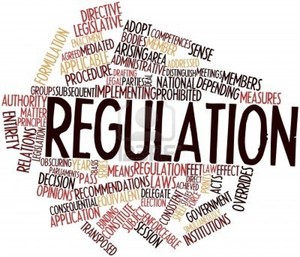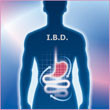As the first biosimilars are being approved in the US, there are a number of clinical and regulatory issues that must be considered for the safe and appropriate utilization of these products within the health system [1]. Biosimilars provide the opportunity to lower cost and improve access to important biological treatments. However, their success will depend largely on their acceptance by clinicians, payers and patients.
Biosimilars are follow-on biologicals that are approved through an abbreviated regulatory pathway. Unlike small molecule generics, the size, complexity and manufacturing processes are such that it is virtually impossible to create identical copies of the biological. In this regard, they cannot be considered ‘generics’ in the same sense as small molecule drugs. In addition, biologicals are much more likely to produce immunogenic reactions due to changes in the molecule or the manufacturing process. There is no primary test of biosimilarity. Rather, the regulatory approach is one described as a step-wise, totality of the evidence approach. It includes robust physicochemical analysis of the biosimilar compared to the reference product, pharmacokinetic and pharmacodynamics studies, immunogenicity and limited clinical trials.
It is important to realize that the intent of the abbreviated pathway is not to reconfirm the safety and efficacy of the biological. Rather, it is designed to reduce residual uncertainty about the clinical comparability to the reference product in terms of safety and efficacy. The experience in Europe of the European Medicines Agency (EMA) has helped to inform the regulatory approach of the US Food and Drug Administration (FDA). In addition, the European experience has demonstrated good success with over 20 biosimilars now available.
While there are many similarities in the regulatory approach of EMA and FDA, there are a few differences. EMA has developed specific annexes to guide the development of biosimilars for key therapeutic categories, while FDA has not. Probably the most important difference is around the designation of interchangeability. EMA’s approach does not include any designation of interchangeability, while FDA plans to create a level of approval for biosimilars that will be termed as an interchangeable biosimilar. This is a product that would be expected to produce the same clinical results in any given patient and that the biological product may be substituted for the reference product without the intervention of the prescriber. To achieve this, the biosimilar manufacturer will need to demonstrate that the safety and efficacy of alternating or switching between the use of the reference product and the biosimilar must be equal to the risk of using the reference product alone. At the time of this paper, FDA had not yet published specific guidance on the testing that will be required to achieve the interchangeable biosimilar designation.
One of the key considerations in the approval and adoption of biosimilars is the issue of extrapolation. By design, the regulatory approval process is intended to avoid the need to reproduce all of the expensive and time-consuming clinical trials and to rely on the information gathered during the approval of the reference product. Extrapolation occurs when the clinical data from one indication may then be extrapolated to other indications. When there is a clear understanding of the mechanism and receptor site of action of a biological, then this is less controversial. The presence of a biomarker to assess efficacy is also a benefit, e.g. neutrophil count with colony stimulating factors, haemoglobin with erythropoietic stimulating proteins. However, for biologicals where the mechanism and/or site of action is less clear and there is not a readily available marker of biological action, there is less confidence in the process of extrapolation.
One other key consideration is related to the naming of biosimilars. To permit effective pharmacovigilance programmes, it is critical that the specific drug being prescribed and administered can be clearly identified. Some have advocated for a common International Nonproprietary Name (INN) for the reference product and biosimilar [2]. FDA has published draft guidance on a naming convention that would require that reference products and biosimilars share a common INN but that they would have a four character suffix unique to each product [3]. The intent is that this approach would facilitate effective pharmacovigilance programmes.
Biosimilars have the potential to offer physicians, patients and society more therapeutic options for range of serious illnesses and to reduce costs and improve access. A variety of issues must be addressed to assure safe and appropriate integration of these agents within the US healthcare system. Ongoing education and discussion, combined with emerging clinical data and experience will be critical in achieving broad acceptance and uptake of biosimilars.
Conflict of interest
The author of the research paper [1] reports being a consultant and advisory board member for Amgen and is employed by Visante.
Abstracted by Professor James G Stevenson, PharmD, FASHP, Department of Clinical Pharmacy, College of Pharmacy, University of Michigan, USA.
Editor’s comment
Readers interested to learn more about regulatory issues for biosimilars are invited to visit www.gabi-journal.net to view the following manuscript published in GaBI Journal:
Regional regulatory processes for the approval of biosimilars; differences and similarities
Readers interested in contributing a research or perspective paper to GaBI Journal – an independent, peer reviewed academic journal platform – please send us your submission here.
References
1. Stevenson JG. Clinical data and regulatory issues of biosimilar products. Am J Manag Care. 2015;21(16 Suppl):s320-30.
2. GaBI Online - Generics and Biosimilars Initiative. Comments on FDA’s guidance on naming biologicals [www.gabionline.net]. Mol, Belgium: Pro Pharma Communications International; [cited 2016 May 20]. Available from: www.gabionline.net/Biosimilars/General/Comments-on-FDA-s-guidance-on-naming-biologicals
3. GaBI Online - Generics and Biosimilars Initiative. FDA issues draft guidance on naming biologicals [www.gabionline.net]. Mol, Belgium: Pro Pharma Communications International; [cited 2016 May 12]. Available from: www.gabionline.net/Guidelines/FDA-issues-draft-guidance-on-naming-biologicals
Permission granted to reproduce for personal and non-commercial use only. All other reproduction, copy or reprinting of all or part of any ‘Content’ found on this website is strictly prohibited without the prior consent of the publisher. Contact the publisher to obtain permission before redistributing.
Copyright – Unless otherwise stated all contents of this website are © 2016 Pro Pharma Communications International. All Rights Reserved.








 0
0











Post your comment